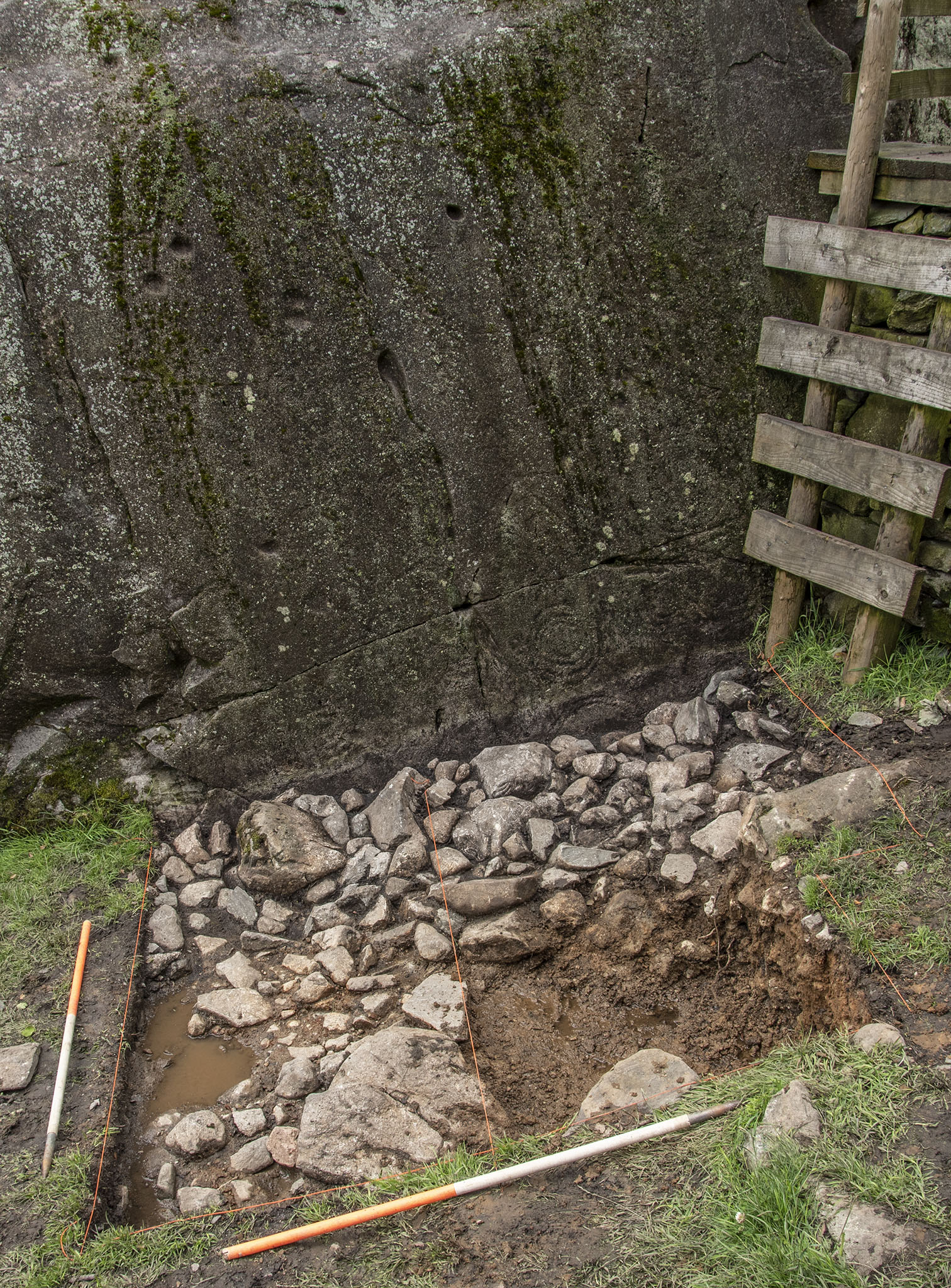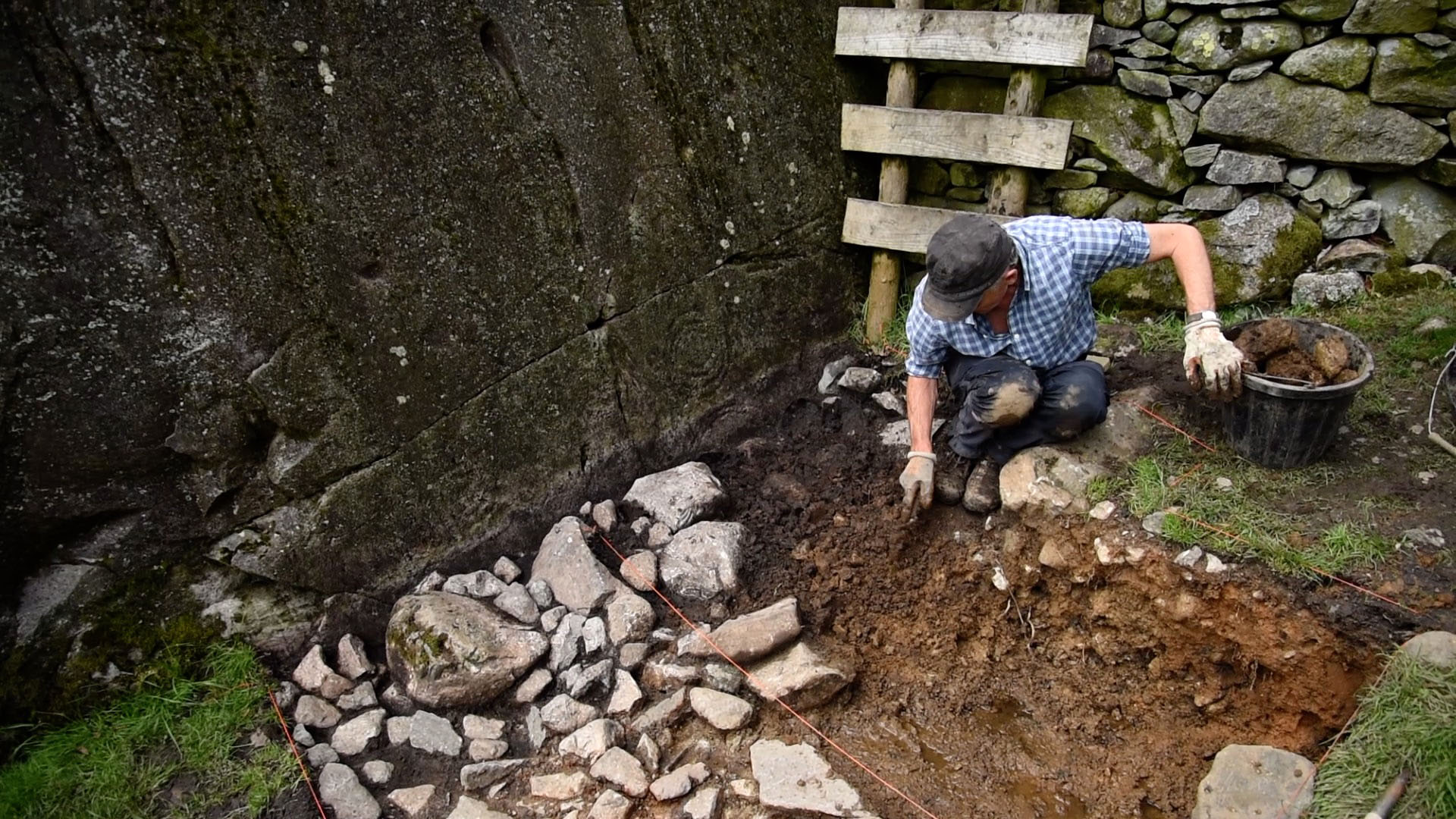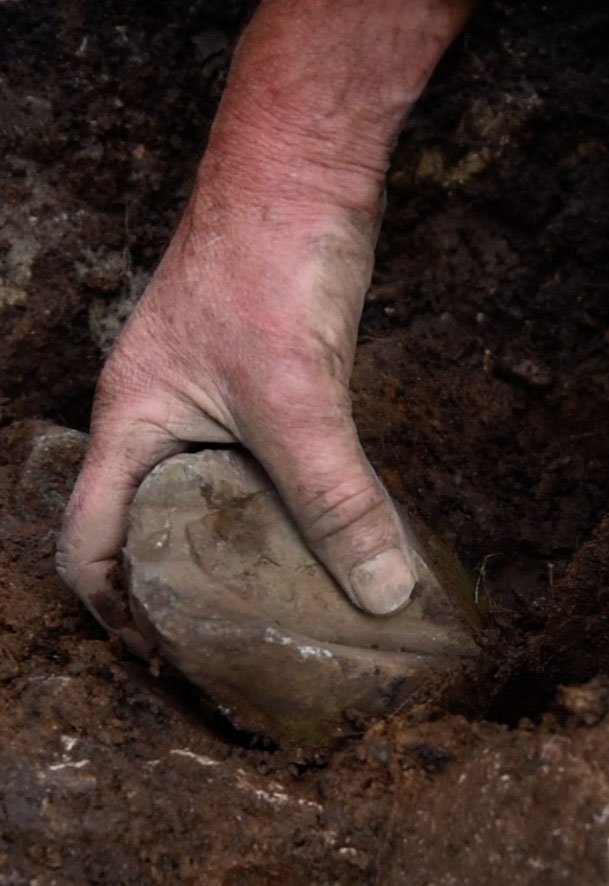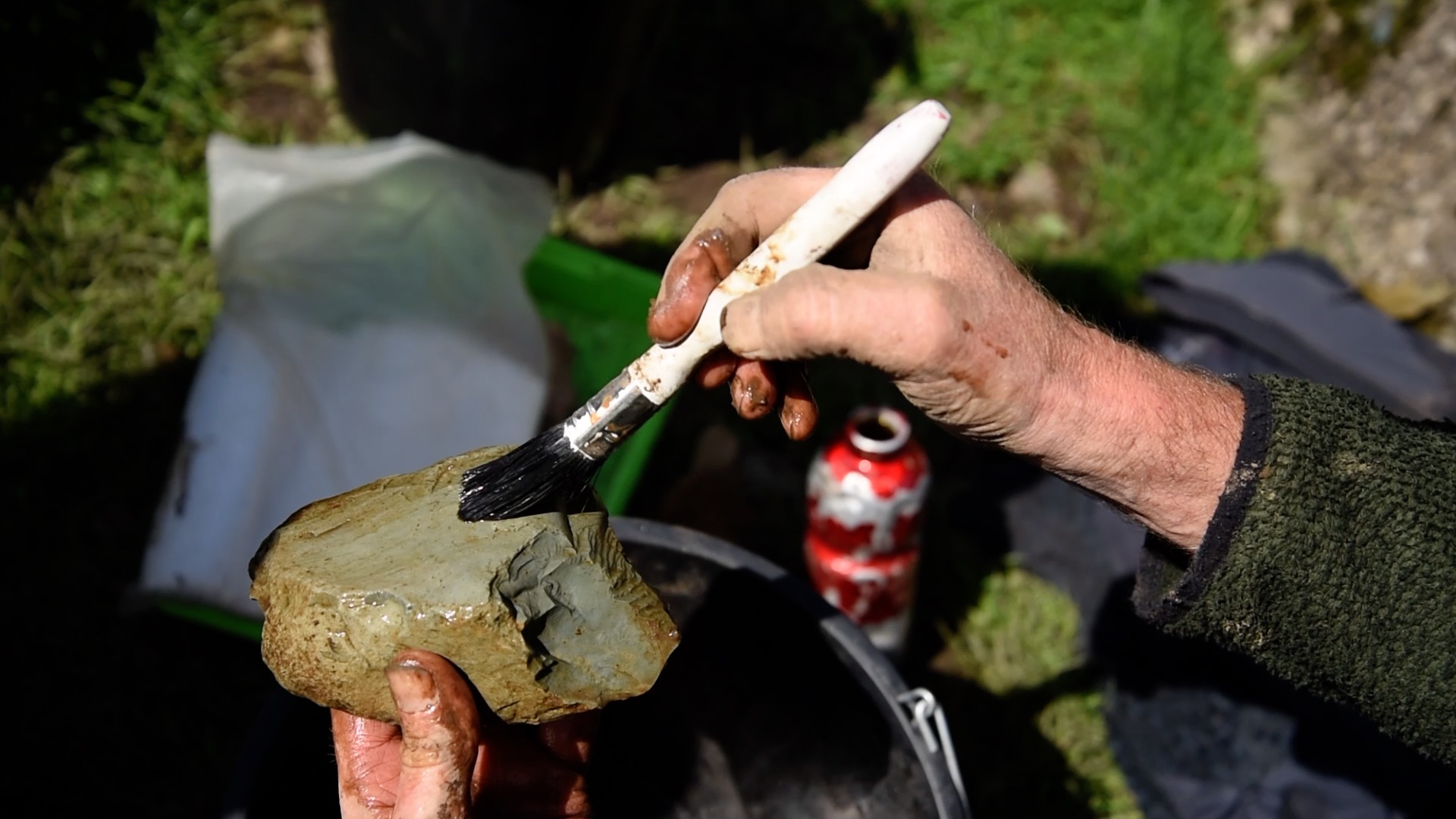Excavating at Copt Howe day 5: Structured deposition in Trench 1
Above: Ronnie takes advantage of the fine weather to survey and draw Trench 4, over on the natural mound (Photos: Aaron Watson, 2018)
In Trench 1, it looks like the cobbled area against the rock is archaeological, and distinct from the less consolidated material outside it. This less organised material may have been deposited by natural processes on the hillside.
Above: Pete exploring the area outside the cobbled surface (Photo: Aaron Watson, 2018)
A surprise stops work in the late morning. Mark Edmonds, and his family, have travelled all the way from Orkney to visit us!
Above: Mark examines Trench 1 with Pete and Richard (Photo: Aaron Watson, 2018)
In Trench 1, it looks like there is aline of larger stones dividing the cobbled surface. This aligns with a natural fissure upon the surface of the Boulder.
Above: Trench 1, showing the line of larger angular blocks which divide the cobbles against the rock. This line of blocks aligns with a dominant vertical fissure which runs across the panel of carvings (Photo: Aaron Watson, 2018)
Next, Pete began to remove the rocks to one side of this divide.
Above: Pete begins to work through the layer of cobbles to one side of the boulder-defined division (Photo: Aaron Watson, 2018)
Below the cobbled surface a very unusual artefact was unearthed. It was a piece of fine-grained volcanic stone that had been shaped to have a sharp point. The point appeared to have been broken at its tip. It did not resemble any artefacts we have previously found at rock art sites elsewhere, but it would be perfect for carving. Our immediate thought was that this may have been a tool used to make the rock art.
Above: An implement for making rock art? (Photo: Aaron Watson, 2018)
Not far from the pointed implement was a distinctive blue-grey pebble that also appeared to be a worked artefact.
Above: A view of the line of rocks in the centre of Trench 1, soon after the area to the right had been cleared. A piece of worked volcanic stone is visible in the centre of the cleared area.
Above: A detailed view of the worked pebble artefact (Photo: Aaron Watson, 2018)
The pebble was washed, revealing flaked surfaces where it had been struck. The raw material was similar to that at Neolithic stone quarries on the mountains nearby, volcanic tuff, but it seems most likely its source was the nearby river.
Above: Washing soil from the tuff artefact.
Above: A short film highlighting some of the events of day five (Footage: Ronnie Scott and Aaron Watson / Edit: Aaron Watson, 2018)
The excavations at Copt Howe were directed by Richard Bradley and Aaron Watson. Many thanks to Yvonne Luke, Diane O'Leary, Nick Russell, Ronnie Scott, Kate Sharpe, Moyra Simon, Peter Style, Sally Taylor and Emma Watson for helping us with the fieldwork.
Thanks also to Historic England for granting permission for us to work at this scheduled monument, and to the National Trust for their support throughout. The excavations were funded by the Prehistoric Society and the Royal Archaeological Institute.
I will update my website with further information as the analysis and interpretation of the excavation continues.











